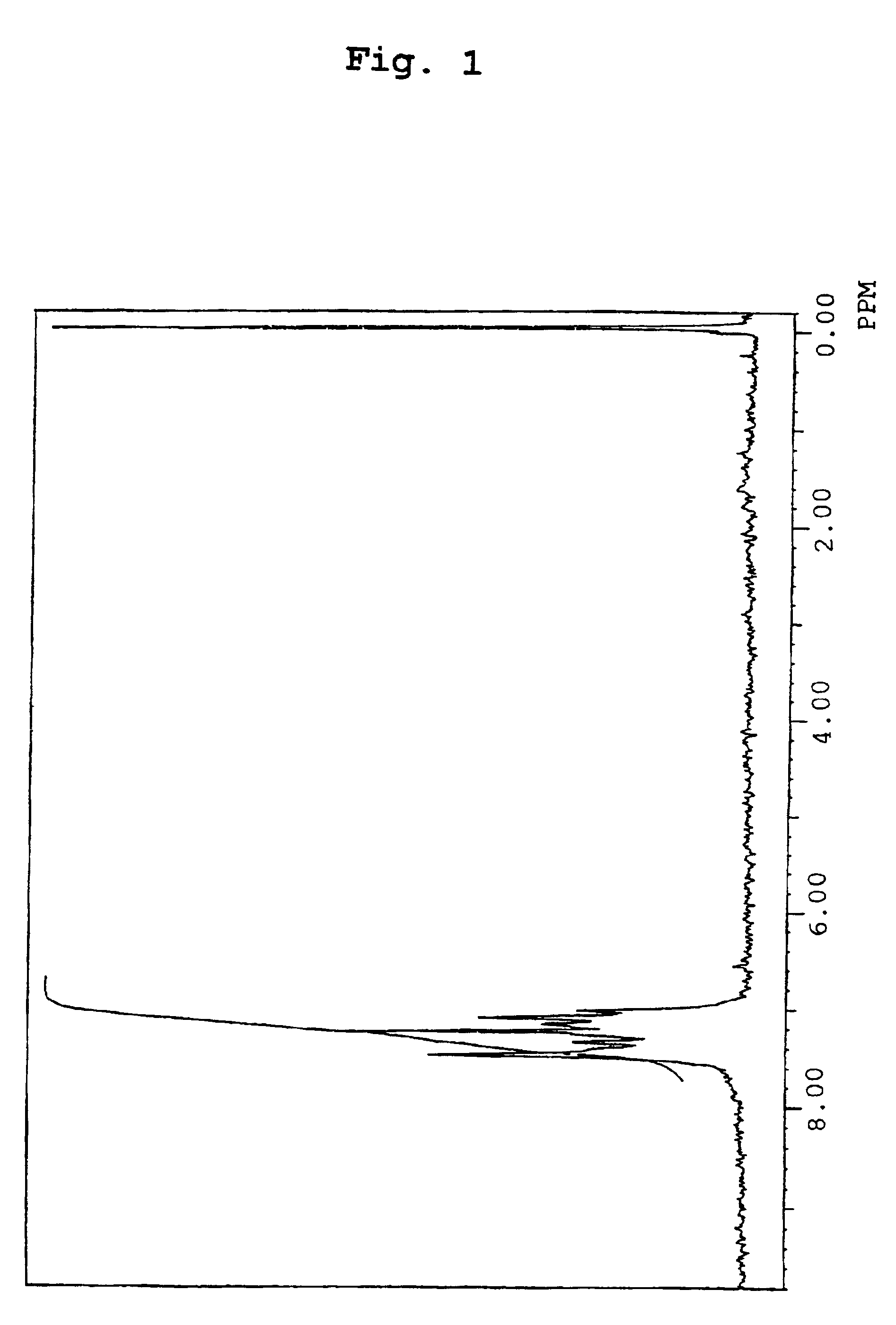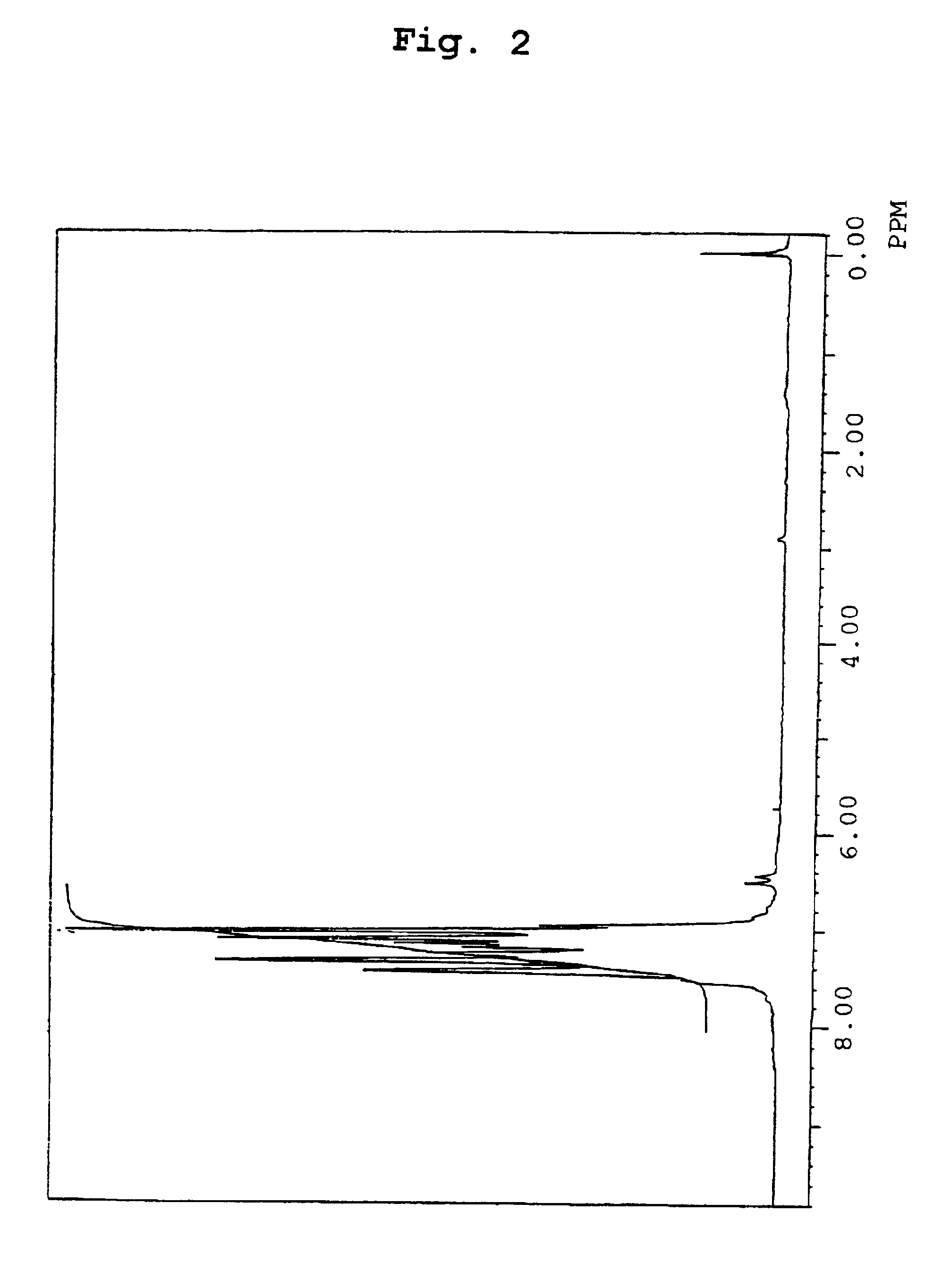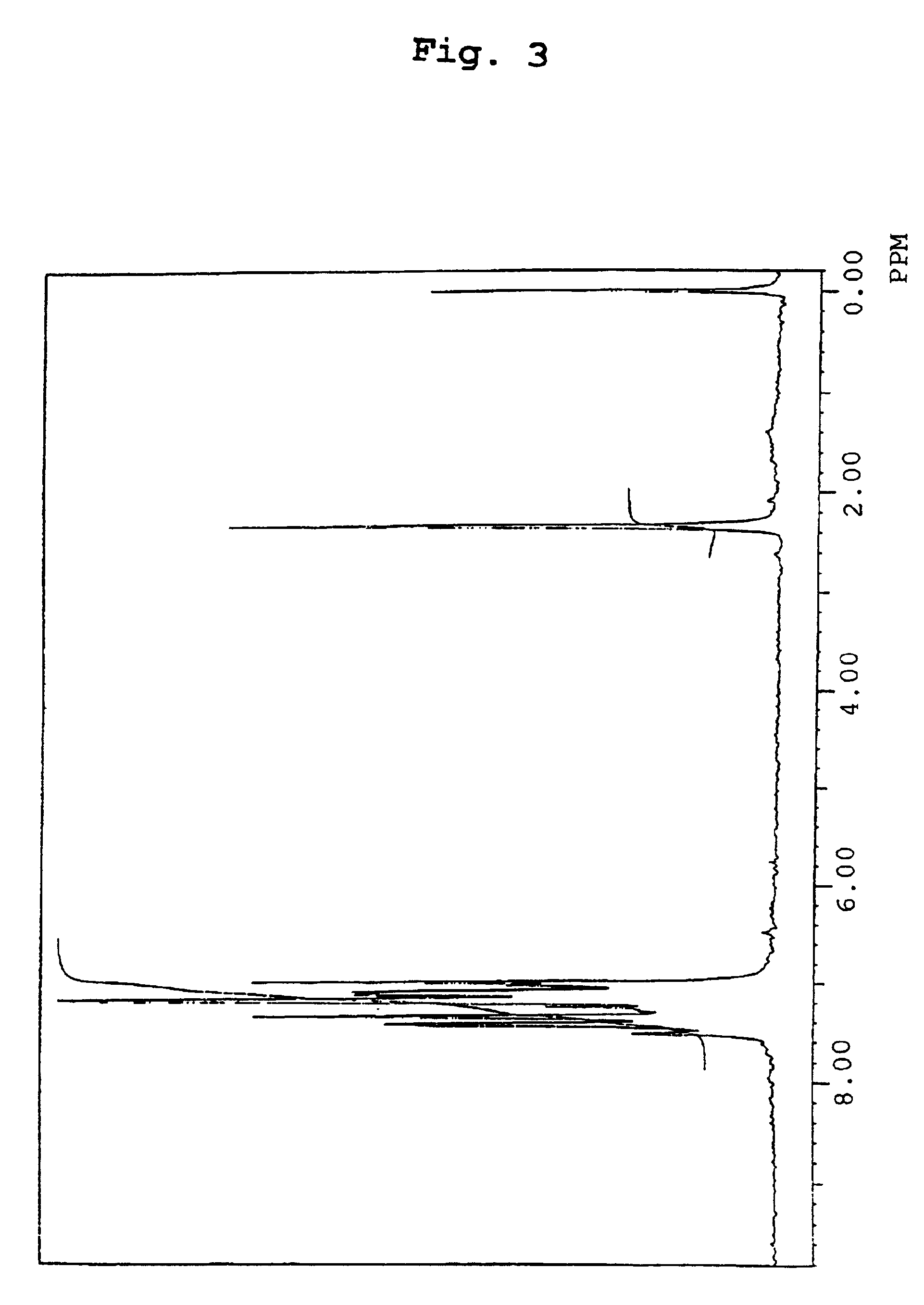Organic electroluminescence device
an electroluminescence device and organic technology, applied in the field of organic electroluminescence devices, can solve the problems of low light emission efficiency, and high driving voltage of organic el devices, and achieve excellent heat resistance, high light emission efficiency, and long life
- Summary
- Abstract
- Description
- Claims
- Application Information
AI Technical Summary
Benefits of technology
Problems solved by technology
Method used
Image
Examples
synthesis example 1 (
Compound (2))
[0124]Synthesis of Intermediate Compound A
[0125]In a 200 ml round bottom flask, 0.38 g (2.04 mmole) of 4-bromobenzaldehyde and 0.98 g (4.29 mmole) of ethyl benzylphosphonate were dissolved in 40 ml of dimethylsulfoxide. To this was added 0.5 g (4.49 mmole) of potassium t-butoxide in small portions at the room temperature and the resulting mixture was stirred for 18 hours. The reaction mixture was poured into 500 ml of water, solid was filtered to give yellow solid (0.5 g).
[0126]In a 100 ml round bottom flask, the crystals obtained above, 2.0 g (12.0 mmole) of potassium iodide and 1.14 g (6.0 mmole) of copper iodide were dissolved in 10 ml of hexamethylphosphoramide and the resulting mixture was stirred under heating at 150° C. for 6 hours. After the reaction was completed, 10 ml of a 1 N aqueous hydrochloric acid was added to the reaction mixture and the organic layer was extracted with toluene. After the extract was concentrated, the reaction product was purified by re...
synthesis example 2 (
Compound (9))
[0133]Synthesis of Intermediate Compound C
[0134]In a 200 ml round bottom flask, 51.2 g (0.3 mole) of diphenylamine, 71.4 g (0.3 mole) of 1,4-dibromobenzene, 34.6 g (0.36 mole) of potassium t-butoxide, 4.2 g (5.9 mmole) of PdCl2(PPh3)2 and 1.2 liter of xylene were mixed together and the obtained mixture was stirred at 130° C. for one night.
[0135]After the reaction was completed, the organic layer was concentrated and about 100 g of brown crystals were obtained. The crystals were purified in accordance with the column chromatography (silica gel, hexane / toluene=10 / 1) and 28 g (the yield: 29%) of the following Intermediate Compound C was obtained:
[0136]Synthesis of Compound (9)
[0137]In a 100 ml round bottom flask, 0.48 g (1 mmole) of Intermediate Compound B was dissolved in 10 ml of diethyl ether and the mixture was cooled to −78° C. To the cooled mixture, 2 ml (1.5 M, 3 mmole) of n-butyllithium was added and the resulting mixture was stirred for 1 hour. Then, a solution p...
synthesis example 3 (
Compound (18))
[0139]Synthesis of Intermediate Compound D
[0140]A Grignard reagent was prepared by adding magnesium and diethyl ether to 0.48 g (2.0 mmol) of 1,4-dibromobenzene. Separately, in a 100 ml round bottom flask, 5.7 g (20.0 mmole) of 1,4-dibromonaphthalene and 10 mg of NiCl2(dppp) were dissolved in 20 ml of diethyl ether and the resulting mixture was cooled in an ice bath. To the cooled mixture, the Grignard reagent prepared above was added and the obtained mixture was stirred under refluxing for 6 hours. After the reaction was completed, 10 ml of a 1 N aqueous hydrochloric acid was added. After the organic layer was separated, the solvent was removed by distillation and 0.30 (the yield: 30%) of the following Intermediate Compound D was obtained:
[0141]Synthesis of Compound (18)
[0142]In a 100 ml round bottom flask, 0.09 g (1.0 mmole) of aniline and 0.25 g (2.5 mmole) of acetic anhydride were dissolved into 5 ml of methylene chloride. The resulting mixture was stirred at the ...
PUM
| Property | Measurement | Unit |
|---|---|---|
| luminance | aaaaa | aaaaa |
| temperature | aaaaa | aaaaa |
| energy gap | aaaaa | aaaaa |
Abstract
Description
Claims
Application Information
 Login to View More
Login to View More - R&D
- Intellectual Property
- Life Sciences
- Materials
- Tech Scout
- Unparalleled Data Quality
- Higher Quality Content
- 60% Fewer Hallucinations
Browse by: Latest US Patents, China's latest patents, Technical Efficacy Thesaurus, Application Domain, Technology Topic, Popular Technical Reports.
© 2025 PatSnap. All rights reserved.Legal|Privacy policy|Modern Slavery Act Transparency Statement|Sitemap|About US| Contact US: help@patsnap.com



